- The Byzantine Episcopal Influence on the History of Side, Pamphylia
- Exploring Side, Pamphylia Hidden Byzantine Monuments
- The Lost Metropolis Episcopal Palace in Side, Pamphylia
- Discovering the Repurposed Chapel in Side Open Air Museum
- The Hidden Mosaics among the Side Market Shops – Part one
- The Hidden Mosaics among the Side Market Shops – Part Two
- The Hidden Mosaics among the Side Manavgat Shops – Part 3
- Hidden Things From Side’s Fountain to Grand Theater
- Hidden Crosses in the Side Archeology Museum
- Side’s Fascinating Basilica near Apollo Temple
- Analyzing the 12 churches and chapels of Side, Pamphylia
- Analyzing the Synagogue in Side, Pamphylia
The archaeological digs and reconstruction of the old town of Side, along with the enclosed open-air museum, have highlighted the non-Christian aspects of the city’s history. However, it is also important to explore the rich Christian heritage of this former Byzantine city. In my series on Pamphylia’s Side, I will examine the history of the Byzantine sites and monuments, which will show Side’s significance to influence the region.
The Spread of Christianity in Side, East Pamphylia
This port city offered multiple nationalities and religions to enter the city. From this port, the gospel spread along the coast and into the region’s north. The history of Side since the 1st century highlighted the spread and difficulties of the Christian faith in this city. Early Arab raids, piracy, and the coming of the Seljuks (12th-13th century) enabled the city’s decline.
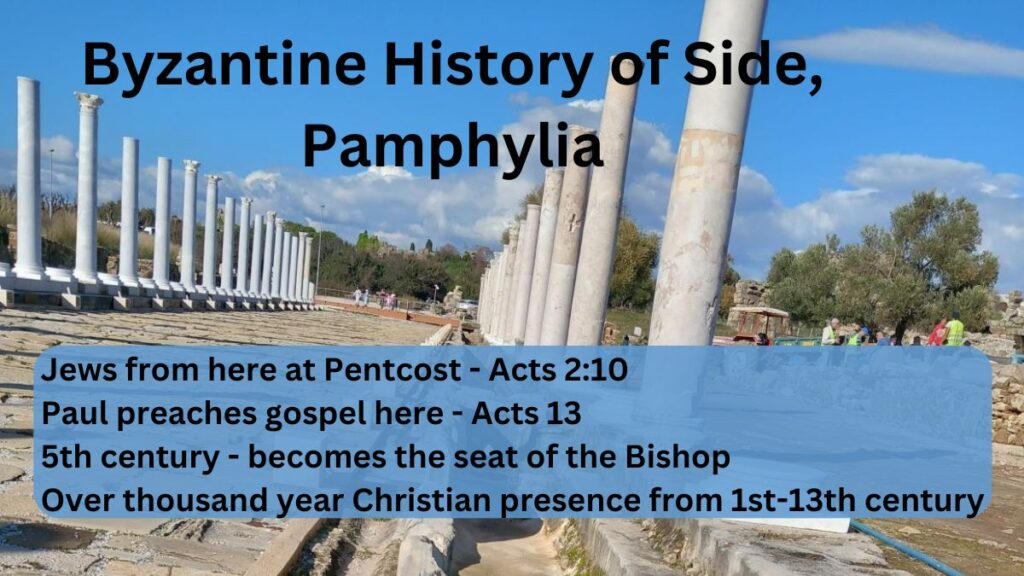
Bishops of Side
In a simple Google search on the different bishops of Side, I only came across three names. Until I found the two resources below, I knew nothing of the religious history of this city. This list gives us a framework to discover more the Byzantine history of Side. Further study is needed.

Basilicas and Chapels
Walking tour map in Open Air Museum and between Fountain and Theater which gives an overview of the history of Side.
The neglect of Christian History
The Apollo temple was in ruins a few years ago and has now been resurrected to offer historical insights and a location for tourists. This peninsula boasts at least nine different temples along the water. Scattered among these temples one can find chapels and churches.
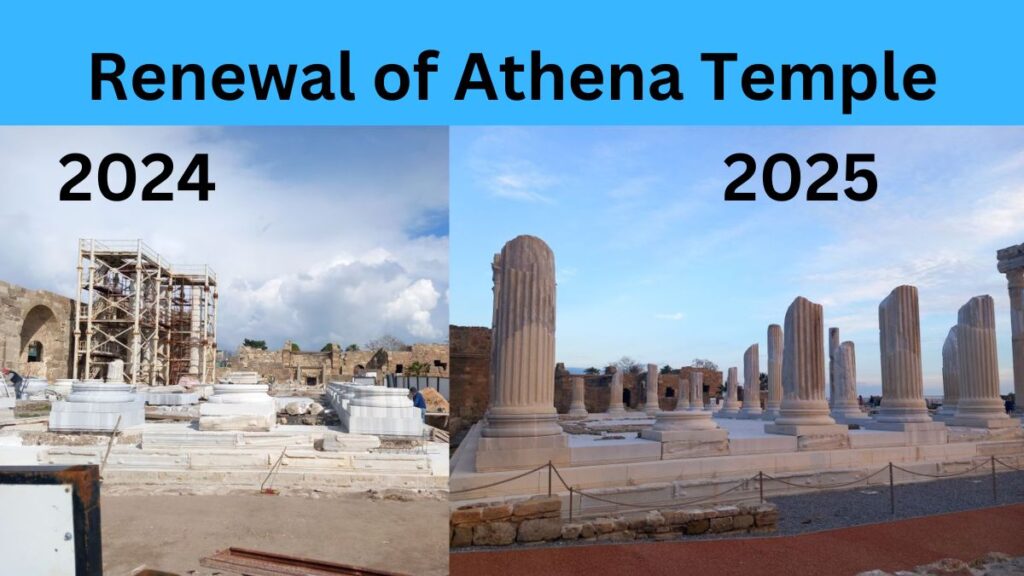
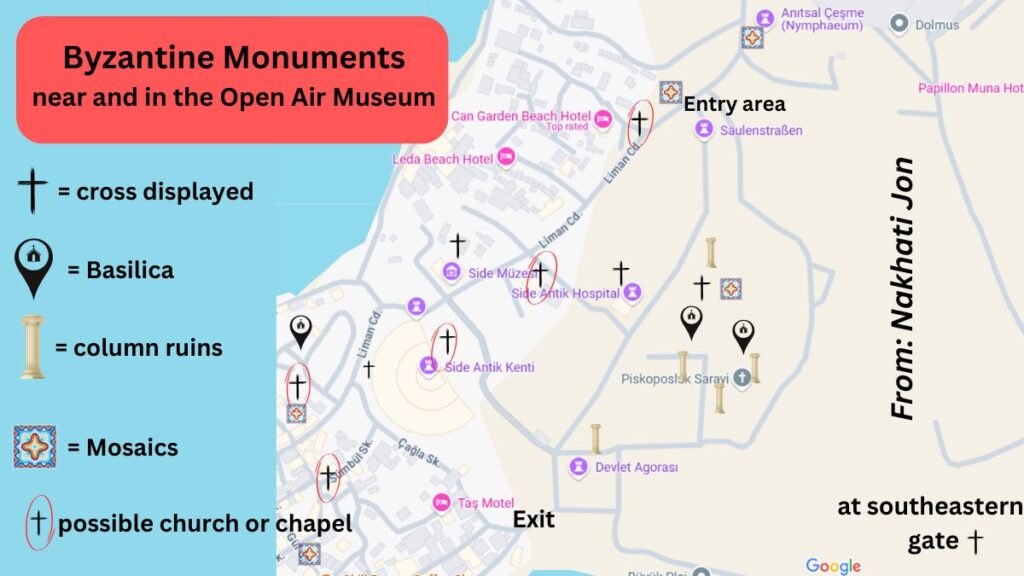
This map is essential to understanding what one looks at when entering the Episcopal Palace. These other important religious sites are not listed in the museum’s index or site maps.
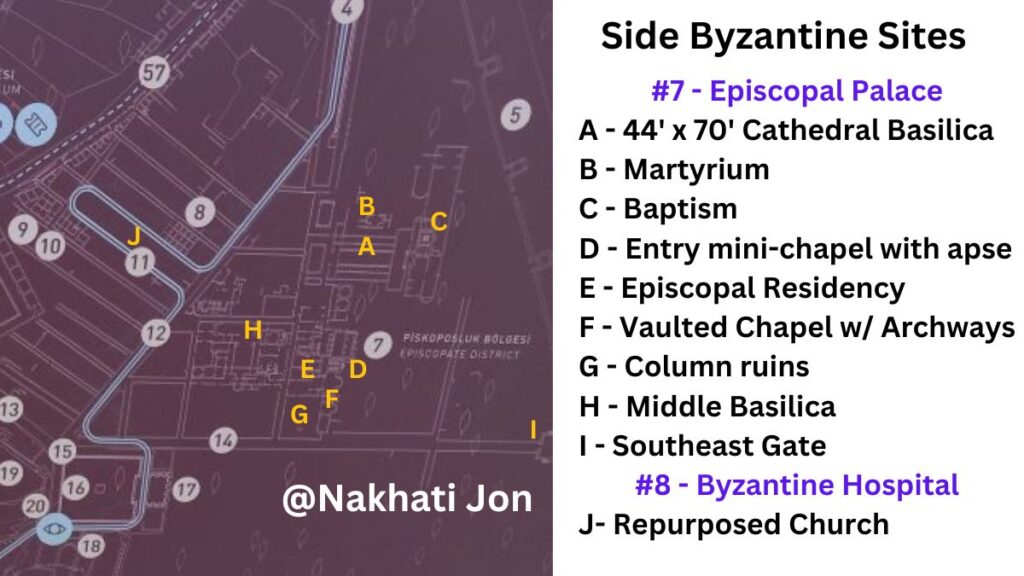
Two key resources for serious students
The Catholic Encyclopedia‘s 1907-1912 list will give hints to the names of the different leaders. Despite a list, details are limited. However, Nilgün Elam’s Ecclesiastical Personages of Side (Σίδη) of Pamphylia according to Literary and Sphragistic Data provides an in-depth knowledge of the key bishops at this location.
My many other explorations:

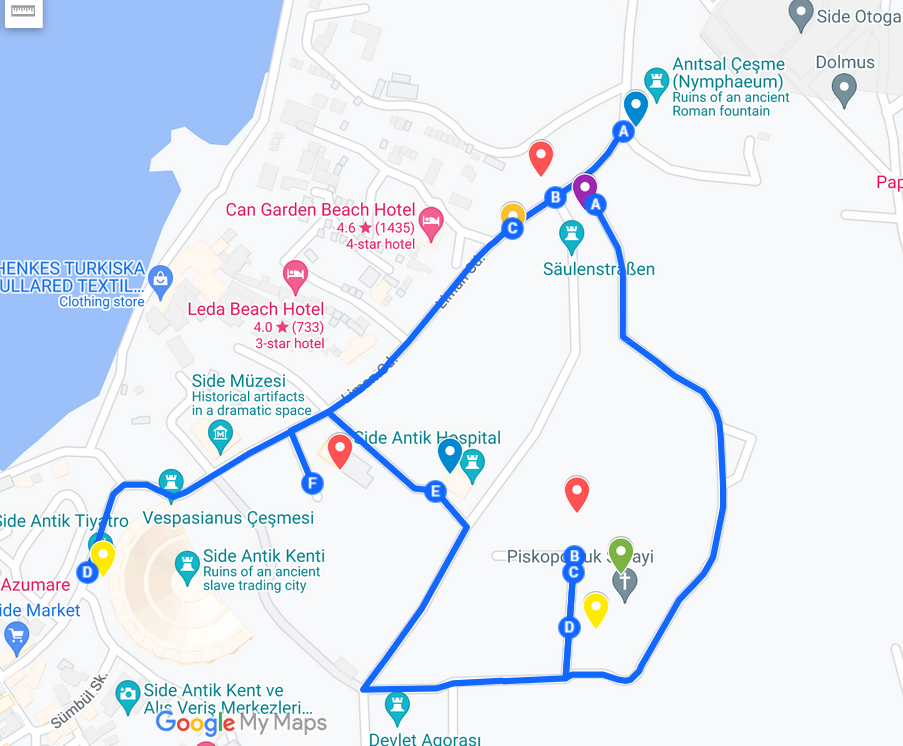
[…] The Byzantine Episcopal in the History of Side, Pamphylia […]